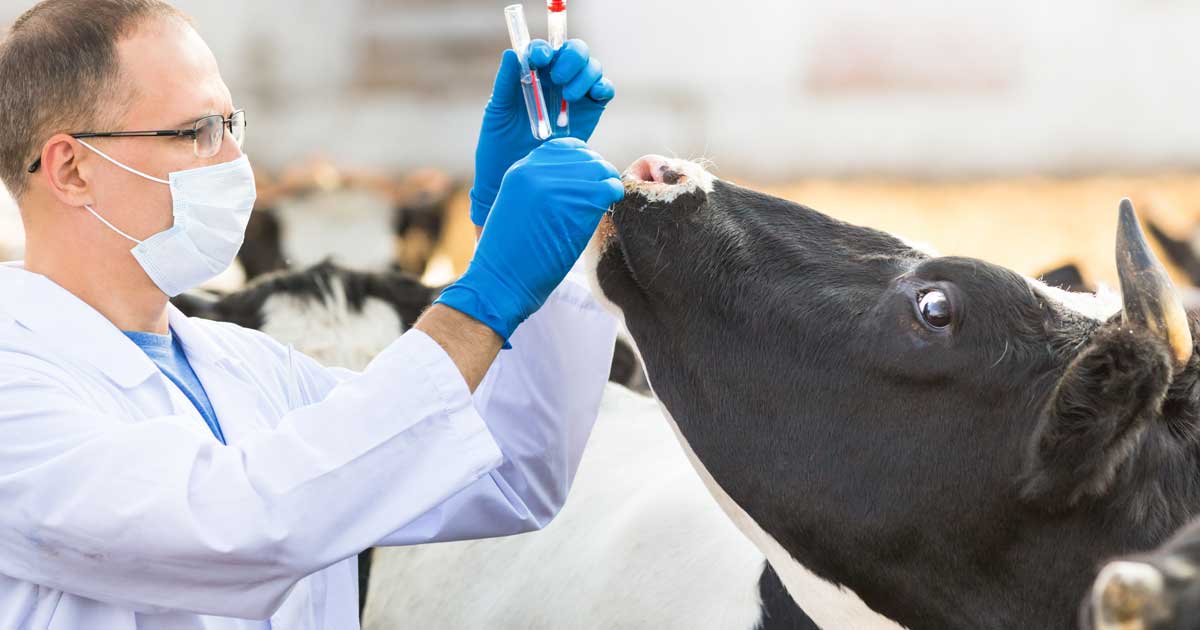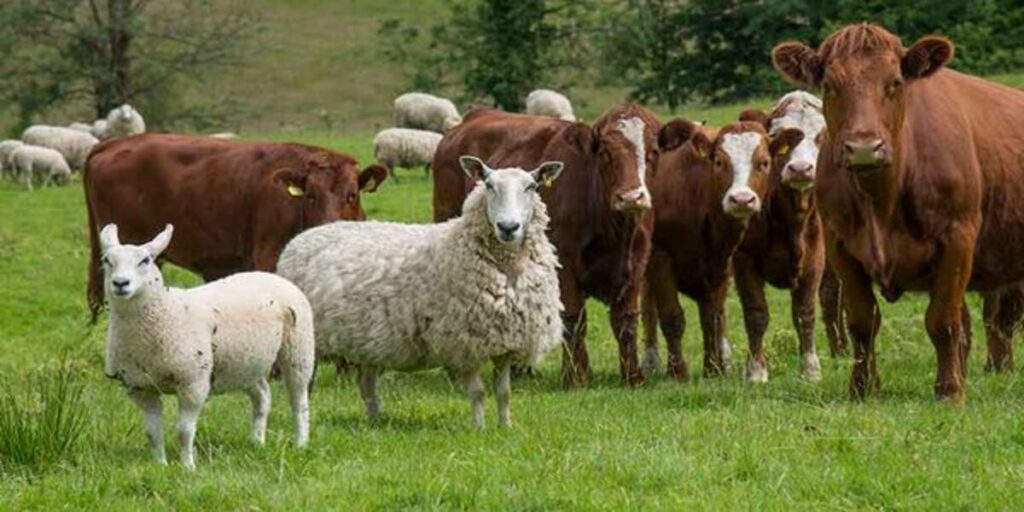Bluetongue cattle disease is an alarming viral illness that threatens livestock, particularly cattle and sheep. Although harmless to humans, this disease can have devastating consequences for farm animals, potentially leading to significant economic losses in the agricultural sector. With increasing outbreaks across various countries, farmers must be vigilant, recognize the symptoms, and take appropriate measures to protect their livestock.
In a significant health alert for the agricultural community, authorities recently confirmed that a single sheep infected with the bluetongue virus has been found near Haddiscoe, a small rural area in South Norfolk.
Bluetongue cattle disease is caused by a virus transmitted by midges (small flies), which carry the infection from one animal to another. While humans cannot contract or be affected by it, the impact on cattle and sheep can be deadly. Infected animals may suffer severe health complications, with some even succumbing to the disease if left untreated. Therefore, protecting animals from bluetongue is essential for maintaining healthy livestock and preventing a larger outbreak in farming communities.
What Are the Symptoms of Bluetongue?
Farmers need to be aware of the symptoms of bluetongue cattle disease to catch the infection early and minimize its spread. Symptoms may vary depending on the species affected, but common signs include:
- Fever
- Excessive salivation
- Swelling around the mouth, head, and neck
- Nasal discharge
- Difficulty breathing
- Lameness or stiffness
- Mouth ulcers and inflammation
- Discoloration of the tongue (in some cases, it may turn blue, hence the name bluetongue)
Sheep tend to show more severe symptoms, but both species can suffer significant health issues when infected. In some cases, bluetongue can lead to death, especially in sheep.
How Does Bluetongue Spread?
Bluetongue is primarily spread through the bites of infected midges. These midges act as carriers, transmitting the virus from one animal to another as they feed. Although midges are the main source of infection, bluetongue cattle disease does not spread through direct contact between animals or via contaminated feed or water.
Due to the essence of its transmission, the disease is more common in areas where midges thrive, particularly during warmer seasons. Climate change and rising temperatures have also contributed to the spread of the disease to unaffected regions.
The disease can also be transmitted when infected animals are moved across borders, making it essential for countries to monitor livestock movement and prevent the spread of the virus across regions.
Restrictions by Animal and Plant Health Agency
The Animal and Plant Health Agency (APHA) in the UK has played a vital role in managing bluetongue outbreaks and enforcing restrictions to prevent the disease from spreading. These restrictions include movement bans on animals identified as being within infected areas. The APHA closely monitors affected regions and requires that any transport or trade of animals from these zones be carefully regulated to minimize risk.
Farmers are also required to report any suspected cases of bluetongue immediately, allowing the APHA to take swift action to control the outbreak. Vaccination programs may be implemented in high-risk areas, and farmers are urged to follow biosecurity measures, such as reducing exposure to midges, to protect their herds.
Instructions of UK Deputy Chief Veterinary Officer Ele Brown to Farmers
In response to recent bluetongue outbreaks, UK Deputy Chief Veterinary Officer Ele Brown has provided clear instructions to farmers to help them safeguard their animals. Farmers are encouraged to remain vigilant for any signs of illness in their livestock and to report suspected cases of bluetongue without delay.

Brown advises farmers to:
- Vaccinate susceptible animals
Where vaccines are available, farmers should ensure that their cattle and sheep are vaccinated against bluetongue, especially if they are in high-risk areas. - Monitor livestock
Regularly check animals for symptoms of bluetongue, particularly during peak midge activity in warmer months. - Implement midge control
Using insect repellents and other control methods can reduce the chances of animals being bitten and infected. - Observe movement restrictions
Farmers must comply with any movement bans issued by the APHA to limit the spread of bluetongue.
Brown emphasizes that early detection and compliance with these measures are critical to protecting livestock and controlling outbreaks.
Statement of NFU President Tom Bradshaw
Tom Bradshaw, President of the National Farmers Union (NFU), has expressed concern over the growing threat of bluetongue cattle disease and its potential to cause widespread damage to the farming industry. In his statement, Bradshaw underscores the need for a coordinated effort to combat the disease and protect farmers’ livelihoods.
Bradshaw said the farmers are working tirelessly to protect their livestock from this devastating disease. We urge the government and relevant authorities to support the farming community by ensuring that vaccines are readily available.
Bradshaw also encourages farmers to be proactive in safeguarding their animals and to work closely with veterinarians and local authorities to mitigate the risk of spreading further.
Economic Impact of Bluetongue on Farms
The impact of bluetongue cattle disease extends beyond animal health. The disease can lead to significant economic losses for farmers, particularly in regions where outbreaks are not effectively contained. A bluetongue outbreak can result in:
- Decreased livestock productivity: Infected animals may produce less milk or have reduced weight gain, which affects overall farm productivity.
- Loss of livestock: In severe cases, bluetongue can lead to the death of infected animals, which is a direct financial loss for farmers.
- Trade restrictions: The imposition of movement bans and restrictions on livestock trade can limit farmers’ ability to sell or transport animals, affecting their income.
- Increased veterinary costs: Treating infected animals and preventing the further spread of the disease can lead to increased veterinary expenses.
Conclusion
Bluetongue, while not a threat to humans, poses a significant danger to farm animals, especially cattle and sheep. With its ability to spread rapidly through infected midges, farmers stay vigilant and implement protective measures to prevent devastating outbreaks. By following the guidance of veterinary experts and adhering to restrictions imposed by health agencies, farmers can play a key role in controlling the spread of bluetongue and protecting their animals. The efforts of organizations like the NFU and the support of government bodies will be critical in ensuring the long-term safety and sustainability of livestock farming.



